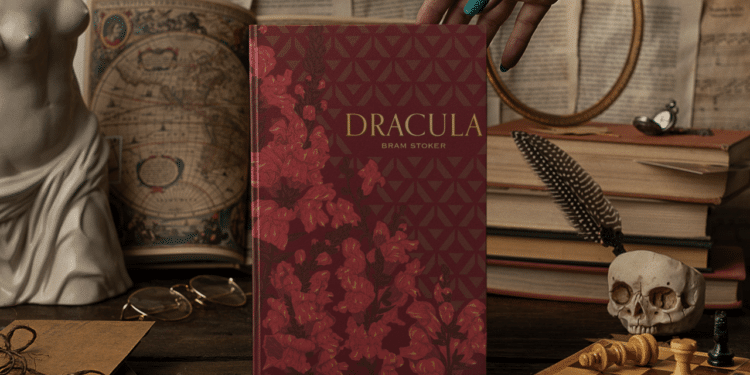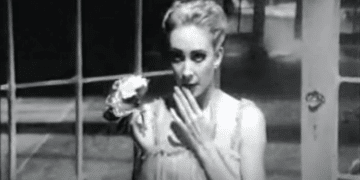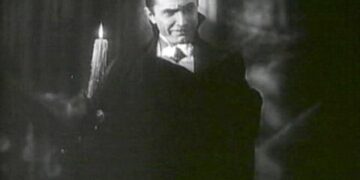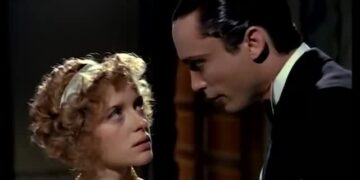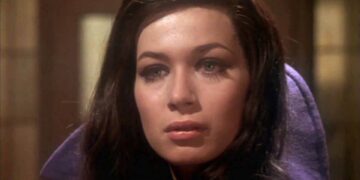Bram Stoker is a name synonymous with the iconic character Count Dracula, but there is so much more to this literary genius than meets the eye. In this revealing biography, we delve into the life and works of Bram Stoker, exploring the man behind the vampire myth and his profound influence on pop culture.
From his early life and career to his personal relationships and creative inspirations, we unravel the intricate tapestry of Bram Stoker’s life, shedding light on the controversies, debunking the myths, and celebrating his enduring legacy.
Bram Stoker’s Biography: Early Life and Career
Born on November 8, 1847, in Dublin, Ireland, Abraham Stoker, known as Bram, came from humble beginnings. He was the third of seven children born to a civil servant father and a mother known for her storytelling prowess. Stoker grew up in a household rich in folklore and imagination, which laid the foundation for his future literary endeavors.
After completing his education at Trinity College, Stoker embarked on a career in the civil service, working as a clerk at Dublin Castle. However, his true passion lay in the world of literature, and he soon found himself drawn to the vibrant theater scene of Victorian London.
Stoker’s first foray into the arts was as a theater critic, where he honed his skills in observation and storytelling – qualities that would later define his writing.
Bram Stoker’s Literary Works: Beyond Dracula
While Bram Stoker is best known for his gothic masterpiece “Dracula,” his literary repertoire extends far beyond the vampire tale. Stoker’s diverse body of work showcases his versatility as a writer and his ability to captivate readers with a range of themes and genres.
In addition to “Dracula,” some of Stoker’s notable works include “The Jewel of Seven Stars,” a chilling tale of an ancient Egyptian queen’s resurrection, and “The Lair of the White Worm,” a thrilling horror novel set in the English countryside.
Stoker’s writing was characterized by his meticulous attention to detail, atmospheric descriptions, and a keen sense of suspense that kept readers on the edge of their seats.
Bram Stoker’s Influence on Pop Culture
Bram Stoker’s impact on popular culture cannot be overstated. The enduring popularity of “Dracula” has spawned countless adaptations in various media, from movies and television shows to graphic novels and video games.
The vampire archetype created by Stoker has become ingrained in our collective consciousness, shaping the way we perceive and understand these supernatural creatures.
Moreover, Stoker’s influence extends beyond the realm of vampires. His unique blend of horror, mystery, and romance has inspired generations of writers, musicians, and filmmakers.
Elements from his works can be seen in the works of contemporary authors like Anne Rice and Stephen King, as well as in movies such as “Interview with the Vampire” and “Nosferatu.” Stoker’s legacy is a testament to his ability to tap into universal fears and desires, resonating with audiences across time and cultures.
Backbiting and Gossip: Unveiling the Controversies Surrounding Bram Stoker
Behind the faí§ade of Bram Stoker’s success and literary acclaim lies a web of controversies and rumors. Throughout his career, Stoker faced criticism and skepticism from his peers, with some accusing him of plagiarism and others questioning the originality of his ideas. These backbiting and gossip surrounding Stoker’s work and personal life have cast a shadow on his legacy, causing scholars and enthusiasts to reevaluate his contributions.
However, it is important to separate fact from fiction and recognize Stoker’s unique voice and creativity. While there may have been influences and inspirations from other writers and artists, Stoker’s ability to weave these elements into his own distinct narratives is a testament to his talent as a storyteller. By delving into the controversies surrounding Bram Stoker, we gain a deeper appreciation for his work and the complexities of his creative process.
Criticism of Bram Stoker’s Works: Debunking the Myths
No artist is immune to criticism, and Bram Stoker is no exception. Throughout his career, Stoker faced both praise and disdain for his works, with some critics dismissing his writing as mere sensationalism. However, it is important to look beyond surface-level judgments and delve into the deeper meanings and themes present in Stoker’s works.
One common misconception is that Stoker’s writing lacked depth and substance, focusing solely on horror and sensationalism. On the contrary, his works often explored complex societal issues, such as gender roles, sexuality, and colonialism. By examining Stoker’s works through a critical lens, we can debunk the myths surrounding his writing and appreciate the layers of meaning that lie beneath the surface.
Bram Stoker’s Love Life and Friendships: Exploring the Personal Side of the Literary Genius
While Bram Stoker’s professional life is well-documented, his personal relationships and love life remain shrouded in mystery. Stoker was a private individual who guarded his personal affairs closely, leaving little room for speculation or gossip. However, through letters and accounts from friends and acquaintances, we can catch a glimpse of the man behind the words.
Stoker’s marriage to Florence Balcombe, a celebrated beauty of her time, was a source of joy and stability in his life. Their relationship, though not without its challenges, provided a solid foundation for Stoker’s creative endeavors.
Additionally, Stoker’s friendships with prominent figures such as Oscar Wilde and Sir Arthur Conan Doyle offer insight into his social circle and the intellectual exchanges that shaped his thinking.
Life Outside of Writing: Bram Stoker’s Other Passions and Pursuits
While Bram Stoker is primarily known for his literary achievements, he had a multitude of passions and pursuits outside of writing. Stoker was a man of diverse interests, ranging from sports and theater to politics and travel. These varied pursuits not only provided him with inspiration but also served as outlets for his creativity and intellectual curiosity.
Stoker’s love for sports, particularly cricket and football, showcased his competitive spirit and his ability to immerse himself fully in his interests. Additionally, his involvement in the theater scene gave him a firsthand understanding of the power of storytelling and the nuances of performance. Stoker’s multifaceted nature adds depth to our understanding of him as a person and sheds light on the influences that shaped his writing.
Bram Stoker: Rich or Poor? Unraveling the Financial Aspect of His Life
The financial aspect of Bram Stoker’s life has been a subject of speculation and debate. While his literary success, particularly with “Dracula,” brought him considerable fame and recognition, the monetary rewards were not as significant as one might expect. Stoker’s financial situation was often precarious, and he relied on a combination of his civil service job, writing income, and the support of his wife to maintain a modest lifestyle.
However, it is important to note that wealth and success are not always synonymous. Stoker’s contributions to literature and his enduring legacy far outweighed any financial struggles he may have faced. By examining the financial aspect of Stoker’s life, we gain a deeper appreciation for his dedication to his craft and the sacrifices he made to bring his stories to life.
Unforgettable Quotes by Bram Stoker: Capturing His Brilliance in Words
Bram Stoker’s brilliance as a writer is perhaps best captured in his unforgettable quotes. His words have the power to transport readers to dark and mysterious worlds, evoking a sense of dread, fascination, and longing. From the hauntingly beautiful descriptions of Count Dracula to the profound insights into human nature, Stoker’s quotes continue to resonate with readers and inspire a sense of awe.
“Listen to them, the children of the night. What music they make!” is perhaps one of Stoker’s most famous lines, showcasing his ability to create vivid imagery and evoke emotions. Another notable quote from “Dracula” is, “I am longing to be with you, and by the sea, where we can talk together freely and build our castles in the air.”
These words capture the yearning and romanticism that permeate Stoker’s works, leaving an indelible mark on readers.
The Main Places Where Bram Stoker’s Books Are Set: Immersing in His Literary Worlds
One of the defining aspects of Bram Stoker’s writing is the vivid sense of place he creates. His books are often set in specific locations that play a crucial role in the narrative, adding depth and atmosphere to the story. From the dark streets of London in “Dracula” to the eerie landscapes of Transylvania in “The Lair of the White Worm,” Stoker’s settings become characters in their own right.
Stoker’s meticulous attention to detail and his ability to evoke a sense of place transport readers to these locations, immersing them in his literary worlds. Whether it’s the crumbling castles of Eastern Europe or the foggy streets of Victorian London, Stoker’s settings serve as backdrops for the unfolding drama, enhancing the reading experience and adding to the overall allure of his works.
Bram Stoker’s Best Books: Must-Reads Beyond Dracula
While “Dracula” remains Bram Stoker’s most famous and enduring work, his literary contributions extend beyond the vampire tale. Stoker’s other books offer a glimpse into his range as a writer and his ability to craft compelling narratives across various genres. These must-reads showcase Stoker’s versatility and provide a deeper understanding of his literary genius.
“The Jewel of Seven Stars” is a captivating tale that combines elements of horror, mystery, and ancient Egyptian mythology. This lesser-known work by Stoker delves into themes of resurrection and obsession, offering a unique and chilling reading experience.
Another notable book is “The Lady of the Shroud,” a gothic romance set against the backdrop of a small Eastern European island. This lesser-known gem showcases Stoker’s ability to create atmospheric settings and intriguing characters.
Bram Stoker’s First Book: Tracing His Literary Journey
Every writer has a first book, and for Bram Stoker, it was “The Primrose Path,” published in 1875. This early work by Stoker showcases his talent for storytelling and his ability to weave intricate plots. While “The Primrose Path” did not achieve the same level of success as “Dracula,” it laid the foundation for Stoker’s future literary endeavors.
Tracing Stoker’s literary journey through his first book allows us to witness the evolution of his writing style and the themes that would come to define his later works. While “The Primrose Path” may not have garnered widespread acclaim, it is a testament to Stoker’s determination and passion for the written word.
Bram Stoker’s Last Book: Examining His Final Contributions to Literature
Bram Stoker’s last book, “The Lair of the White Worm,” published in 1911, marked the end of his literary career. This final contribution to literature showcases Stoker’s enduring creativity and his ability to captivate readers until the very end. “The Lair of the White Worm” is a thrilling horror novel set in the English countryside, exploring themes of ancient evil and supernatural forces.
While “The Lair of the White Worm” may not have achieved the same level of success as “Dracula,” it is a testament to Stoker’s dedication to his craft and his unwavering commitment to storytelling. Examining Stoker’s last book allows us to appreciate the full scope of his literary contributions and the impact he had on the genre of horror.
Bram Stoker’s Books and Characters in Movies and Other Media: Exploring Their Adaptations
Bram Stoker’s books and characters have become iconic figures in popular culture, inspiring numerous adaptations in movies, television shows, and other media. Count Dracula, in particular, has been portrayed by countless actors, each bringing their own interpretation to the role. From Bela Lugosi’s iconic performance in the 1931 film to Gary Oldman’s haunting portrayal in Francis Ford Coppola’s 1992 adaptation, Count Dracula has become a cultural icon.
In addition to “Dracula,” other characters and themes from Stoker’s works have found their way onto the silver screen. “The Jewel of Seven Stars” and “The Lair of the White Worm” have both been adapted into film versions, bringing Stoker’s unique blend of horror and mystery to a wider audience. Exploring these adaptations allows us to see how Stoker’s stories have transcended time and medium, leaving an indelible mark on popular culture.
Other Artists Who Inspired Bram Stoker: Uncovering His Creative Influences
While Bram Stoker is often celebrated for his own creative genius, he was also influenced by other artists and writers of his time. Stoker’s literary inspirations can be traced back to his childhood, where he was exposed to the rich folklore and storytelling traditions of Ireland. These early influences laid the foundation for his future literary endeavors, shaping his unique voice and perspective.
Stoker’s admiration for the works of Edgar Allan Poe and Sheridan Le Fanu is evident in his writing, with echoes of their gothic sensibilities and macabre themes present in his own works.
Additionally, Stoker’s fascination with the occult and supernatural can be attributed to his encounters with the works of Aleister Crowley and Madame Blavatsky. Uncovering these creative influences allows us to gain a deeper understanding of Stoker’s writing and the cultural milieu in which he thrived.
Other Writers to Be Read Absolutely: Recommendations for Fans of Bram Stoker
For fans of Bram Stoker’s gothic tales and macabre storytelling, there are several other writers who should be on your reading list. These authors, like Stoker, have left an indelible mark on the genre of horror and offer their own unique perspectives on the supernatural and the macabre.
One such writer is H.P. Lovecraft, whose cosmic horror stories have become legendary in the genre. Lovecraft’s ability to create a sense of dread and otherworldly terror is reminiscent of Stoker’s own writing, making him a must-read for fans of the gothic tradition. Another writer worth exploring is Mary Shelley, whose seminal work “Frankenstein” laid the foundation for the genre of science fiction and explored themes of creation and morality.
Conclusion: Bram Stoker’s Enduring Legacy
Despite being primarily associated with Dracula, Bram Stoker’s legacy extends far beyond this iconic novel. His contributions to literature and pop culture are immeasurable, and his influence can still be felt today. Stoker’s backbiting and gossip, his criticism of society, and his exploration of love, friendship, and life outside of writing provide invaluable insights into his personal and creative life.
Whether he was rich or poor, Bram Stoker’s passion for storytelling and his remarkable imagination allowed him to create some of the most enduring characters and narratives in literary history. From the chilling streets of Transylvania to the eerie halls of Castle Dracula, Stoker’s vivid descriptions and atmospheric settings have become ingrained in our cultural consciousness.
Fuel our passion by treating us to a coffee or enrich your collection with the captivating books of Bram Stoker on Amazon through this link.
Join the WFTS revolution and champion the enduring allure of books with us! We’re committed to keeping your experience ad-free and authentically engaging.
Step into our world, where we value substance over flash, and keep the magic of books alive.


